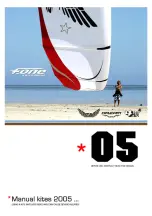
2-46
to flight.
WARNING
Ensure that any ladders or maintenance stands used
are free of ice and snow.
CAUTION
Do not attempt to remove surface contamination by
scraping or chipping, as you will damage the aircraft.
b.
in temperatures of 10°F (-12°C) and below, it may be necessary to pre-heat the
engine using a high volume hot air heater. Pre-heating shall only be performed
after consultation with an RCA Ops AME;
WARNING
Use of small electric heaters is prohibited as they may
result in superficial heating causing disastrous results
for the engine.
c.
with the Ignition Switch and the Master Switch both OFF, pull the propeller
through about five turns, but only in the normal direction of rotation to avoid
damaging the starter motor adapter;
WARNING
Prior to moving the propeller or moving to a position
inside the propeller plane of rotation, visually confirm
that the ignition switch is in the OFF position and the
keys are removed.
d.
perform a Normal Start in accordance with the checklist;
e.
after start, monitor oil pressure / temperature and cylinder heat temperatures
closely to ensure operating minimums and maximums are maintained. Warm the
engine slowly at 1000 RPM, and do not close the cowl flaps to accelerate the
warm-up process;
f.
when taxiing, be alert for slippery conditions and check that all instruments are
operating properly;
g.
prior to take-off, ensure no snow or frost has accumulated on the wings and tail;
h.
to prevent shock cooling of the engine, avoid power-off descents. If a low power
descent is required, clear the engine periodically by applying moderate power
every 30 seconds;
i.
land normally with due consideration for the runway surface conditions;
Summary of Contents for 182
Page 2: ......
Page 57: ...1 39 Figure 1 47 Electrical Schematic ...
Page 76: ...1 58 This page intentionally left blank ...
Page 124: ...2 48 This page intentionally left blank ...
















































